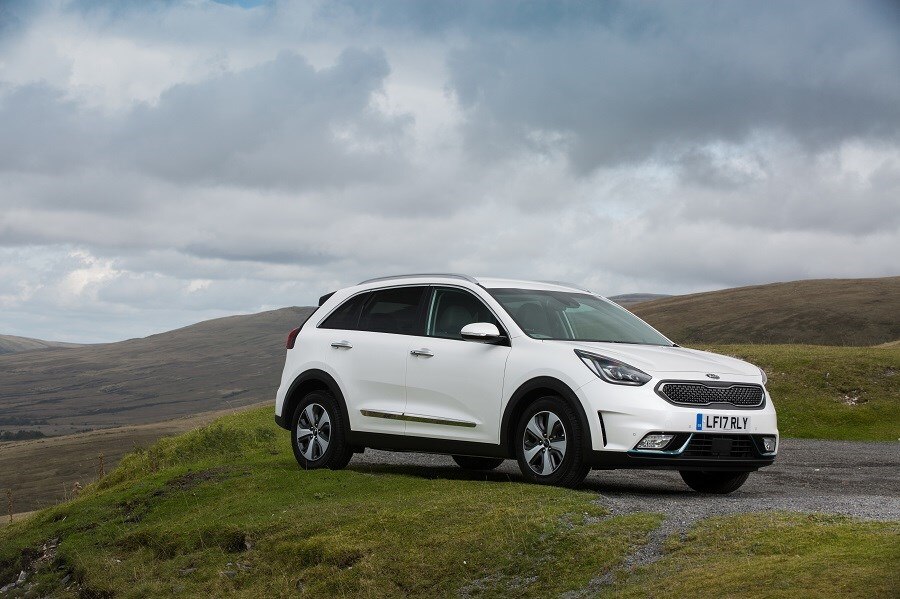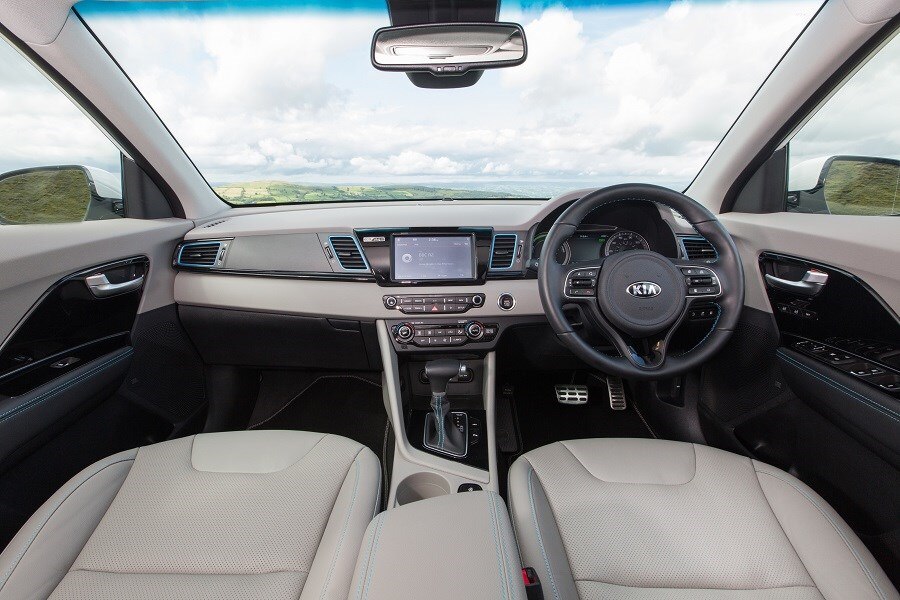Latest model
There’s only one model, which joined the Kia line-up in 2017 - though there are other versions of the Niro available as well, all featuring a form of hybrid powertrain.
The ‘conventional’ Niro Hybrid features a self-charging hybrid electric system similar to that of the Toyota Prius, with official emissions of 86g/km and 74.8mpg.
The PHEV takes that further though. On the NEDC cycle, it returns up to 217.3mpg and has CO2 emissions of just 25g/km. Though in real-world driving conditions and over long journeys these figures aren’t the most realistic.
Kia is very keen to play the Niro PHEV’s eco-card, to the extent of it wearing ice blue scallops around the front fog lamps to mark it out as different from a normal Niro. There are no plans to offer any other trim levels on the Niro PHEV, which itself is based on Kia’s top-of-the-range Niro 4, with a comprehensive equipment package to match.
Value for money
At £30,845, the Niro might appear to be an expensive Kia, but that would be an unfair judgement given the specification on offer and the pricing of some of its key rivals. For example, it’s £1,300 cheaper than the MINI Countryman SE Hybrid yet it is far larger and better equipped.
Included in the price are 16-inch alloy wheels, an eight-inch touchscreen satellite navigation system with European mapping, an eight-speaker JBL premium sound system, Kia’s Connected Services including TomTom, black leather upholstery, parking sensors at both ends, heated seats and steering wheel, radar-guided cruise control and autonomous emergency braking (AEB).
It also gets wireless phone charging, Apple CarPlay and Android Auto smartphone mirroring and a lane-keeping assistance system.
Add in Kia’s industry-leading 100,000-mile, seven-year warranty, along with projected strong resale values for PHEVs across the board and the value-for-money case really starts to stack up.
If your vehicle usage pattern means a PHEV will also significantly reduce your fuel bills, then the fuel saving also need to be taken into account. If PHEV as a concept works for you, then the Niro is a tempting proposition.
Looks and image
Sadly, the Niro isn’t a car that will win any beauty contests. It seems to have a bit of an identity crisis too as it’s an SUV, a crossover, and an estate car all in one—meaning that it combines a low ride height with a large, bulky body.
It’s incongruous to start with, but the appearance isn’t helped by a very different styling theme at both the front and rear.
At the front, the look echoes of that of the Sportage, with large ovoid headlamps and a wide, gaping grille. The styling strakes under the fog lamps lift the front end styling slightly, but it’s still a large and bulky-looking car.
Meanwhile, the rear-end is flatter and squarer with styling cues that ape those of the Rio, with almost-rectangular LED lights and a flat, square tailgate.
In profile, the standard 16-inch alloys do the car no favours—the large expanses of sheet metal mean that, on the standard rims, it looks significantly under-styled. Specify the optional 18s and things improve, but at the expense of ride comfort.
Aesthetically, the Niro lags behind several of its rivals, but if you put substance over style it’s generally inoffensive. Just don’t expect to gaze back at it fondly in a car park.


